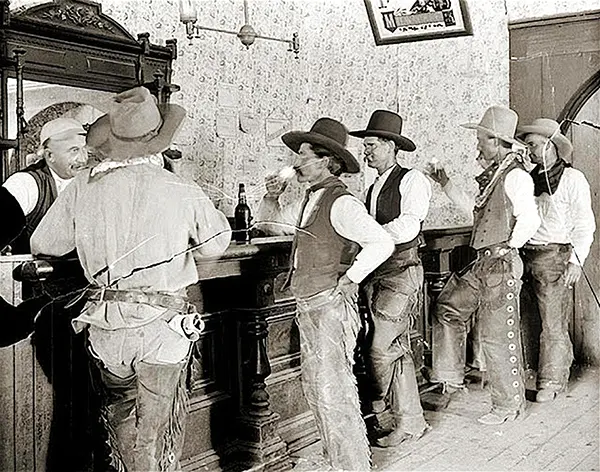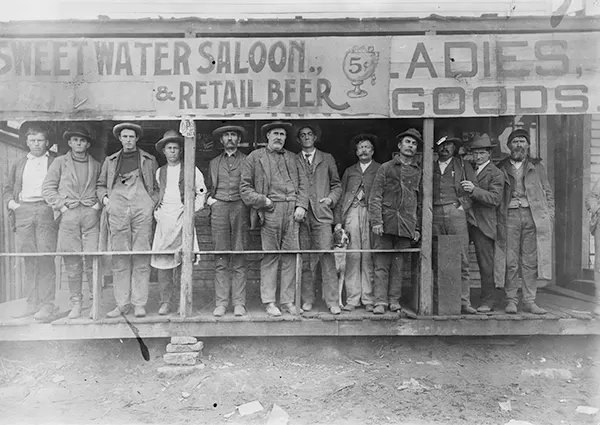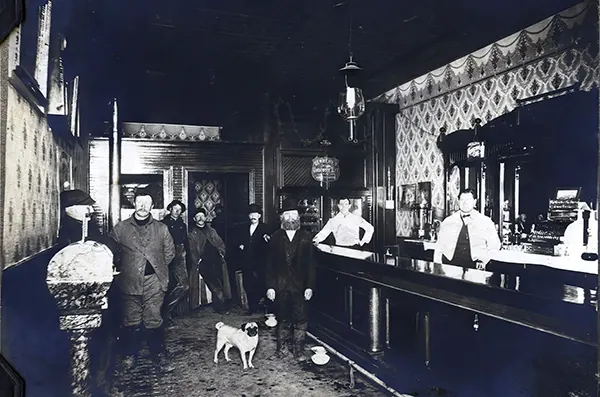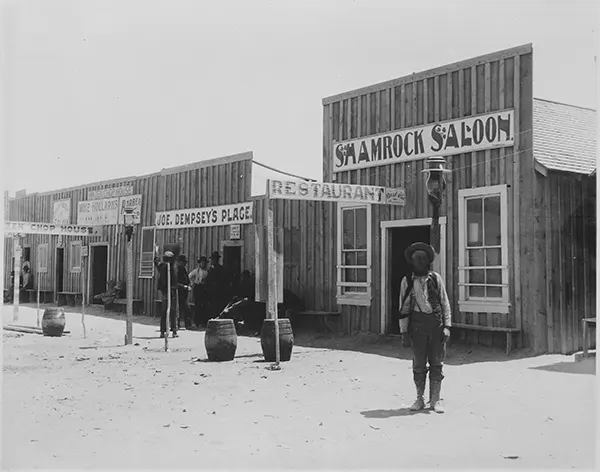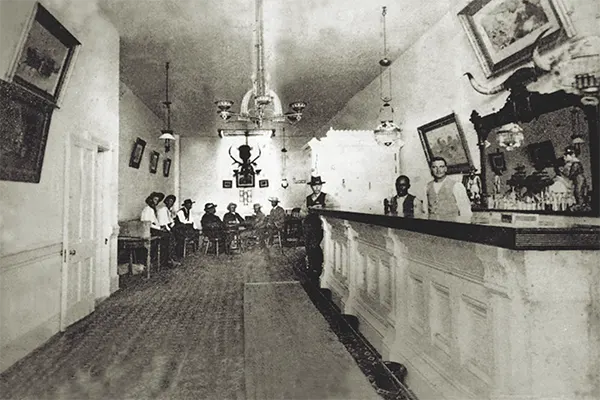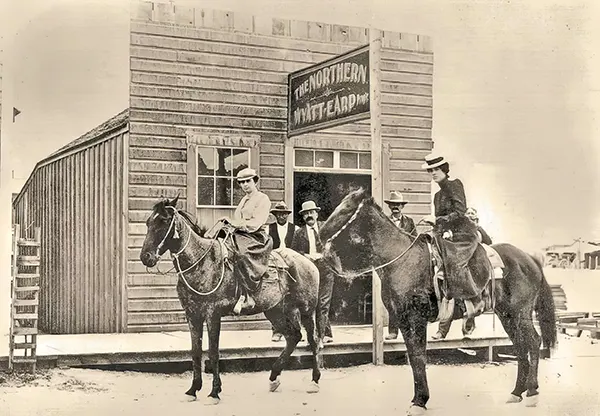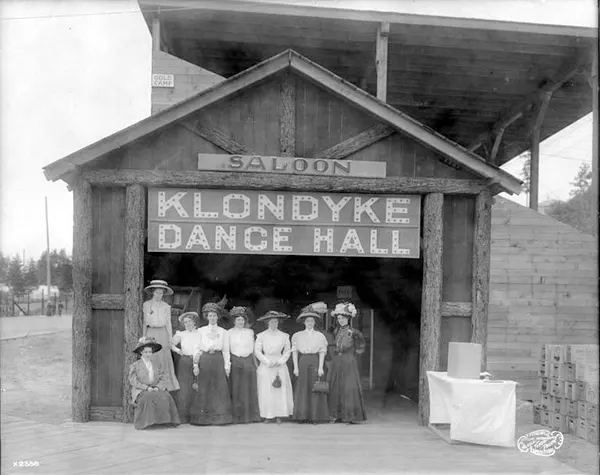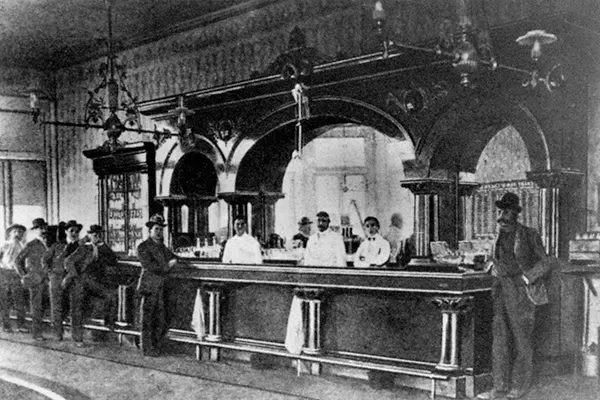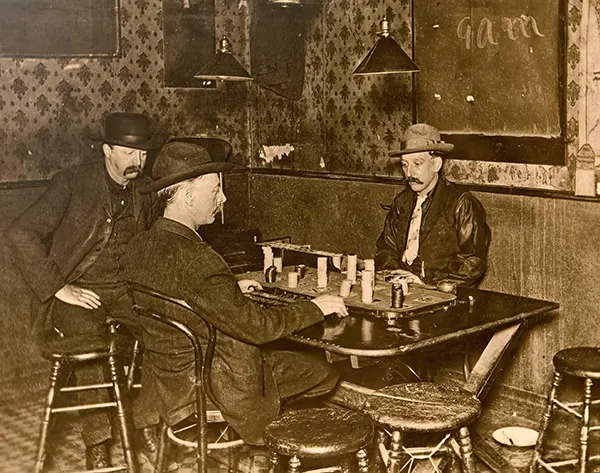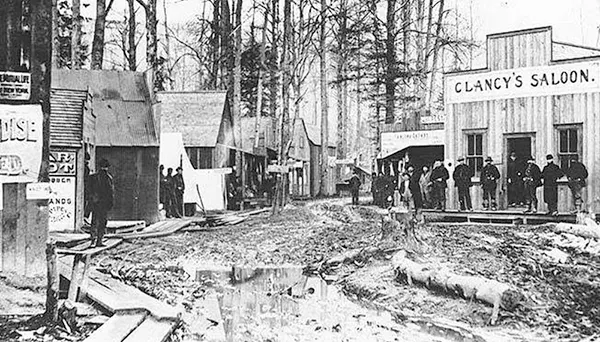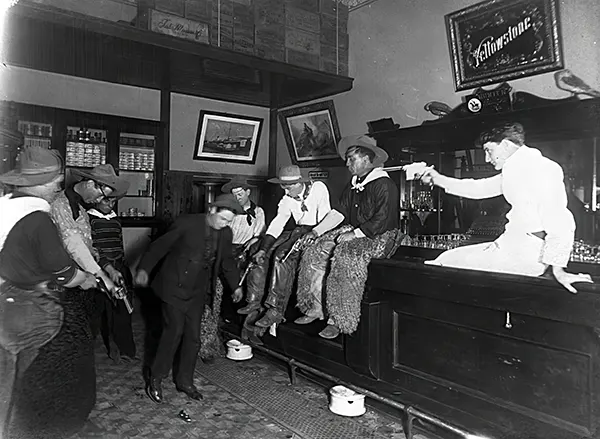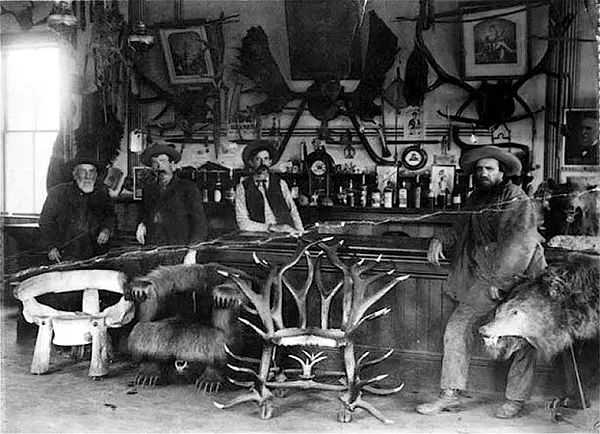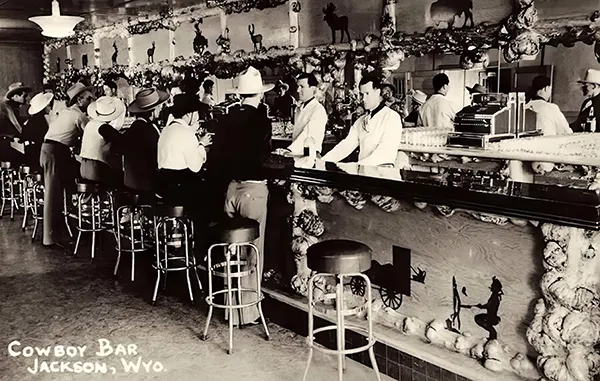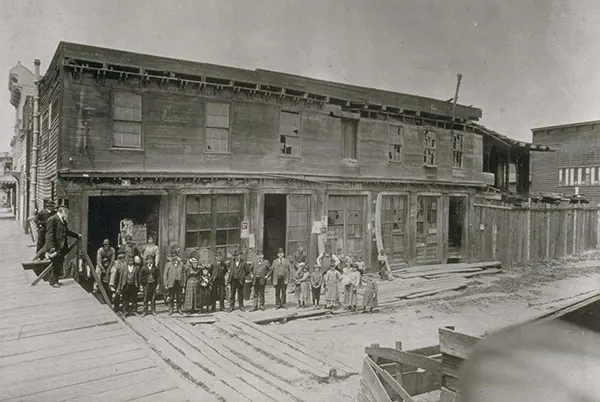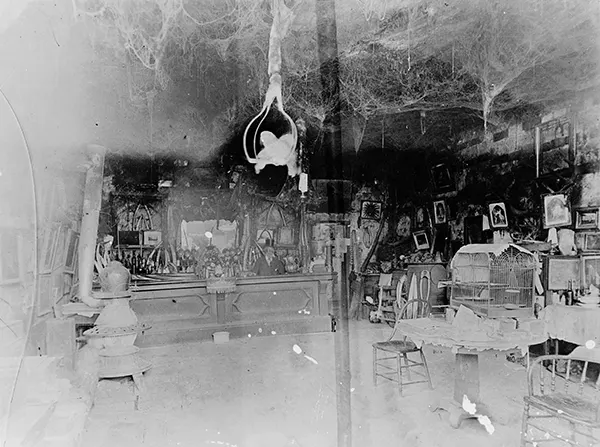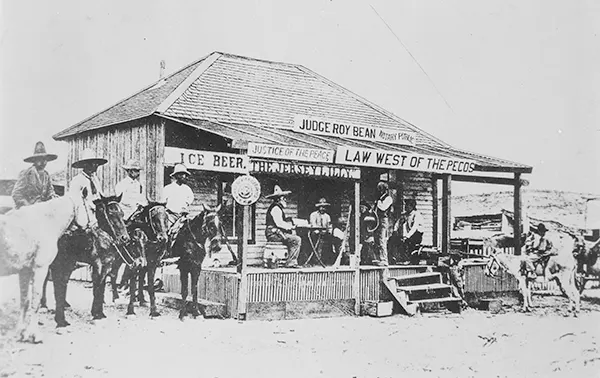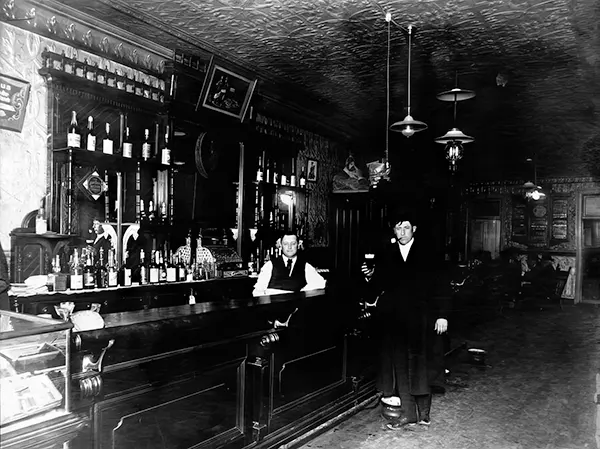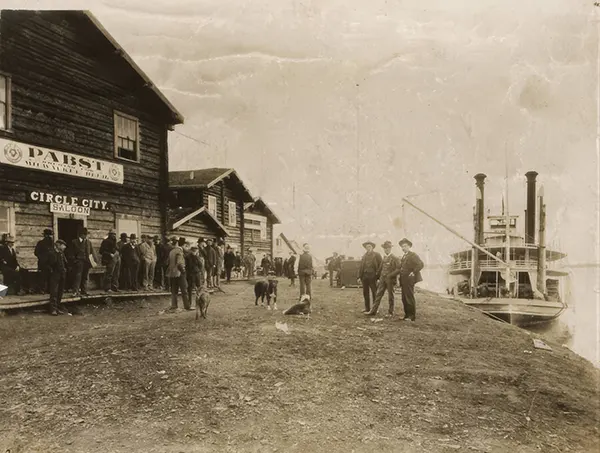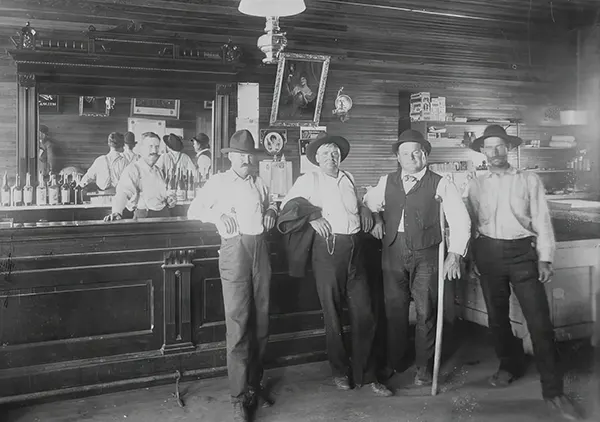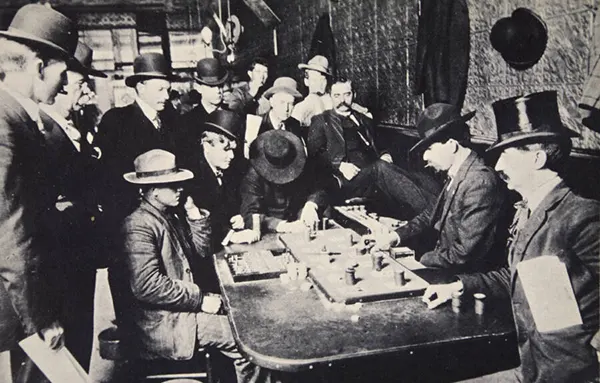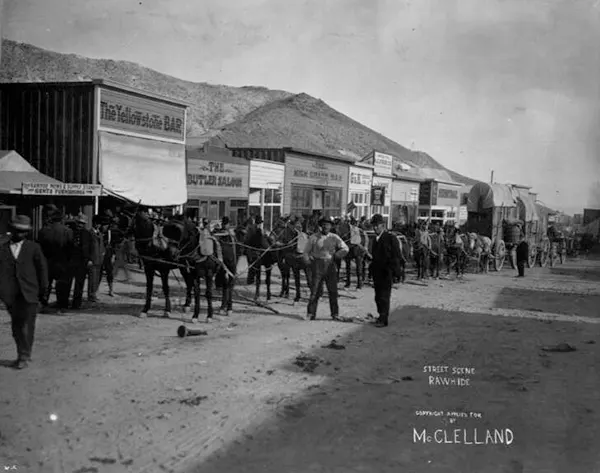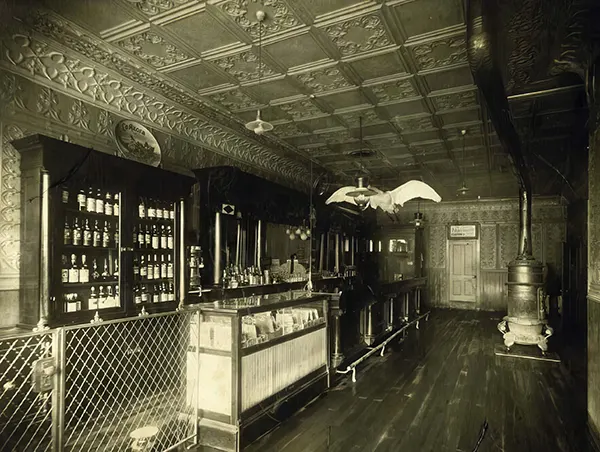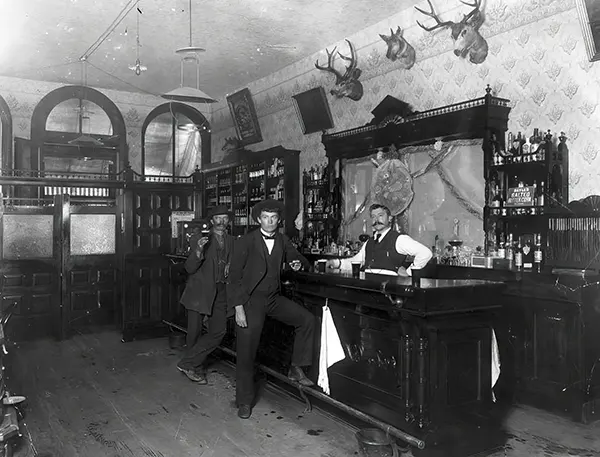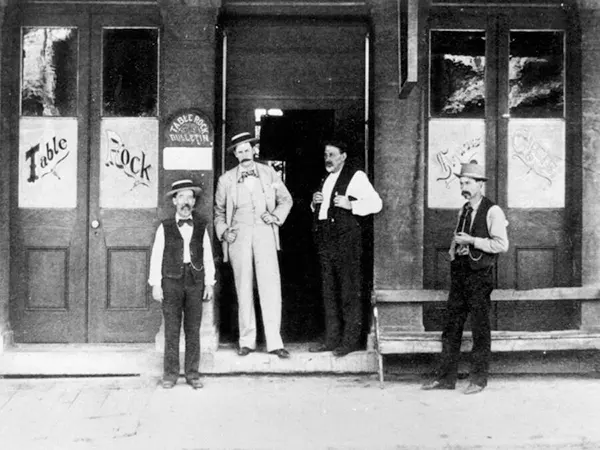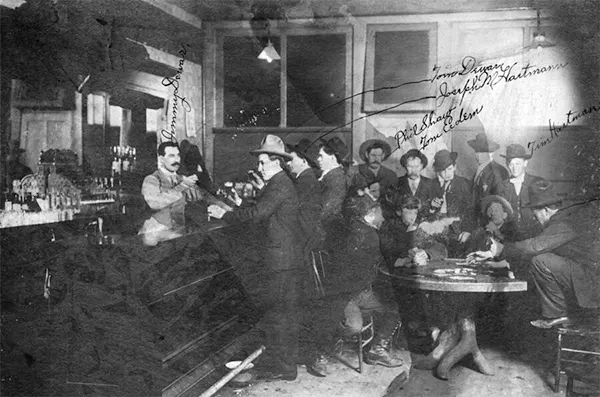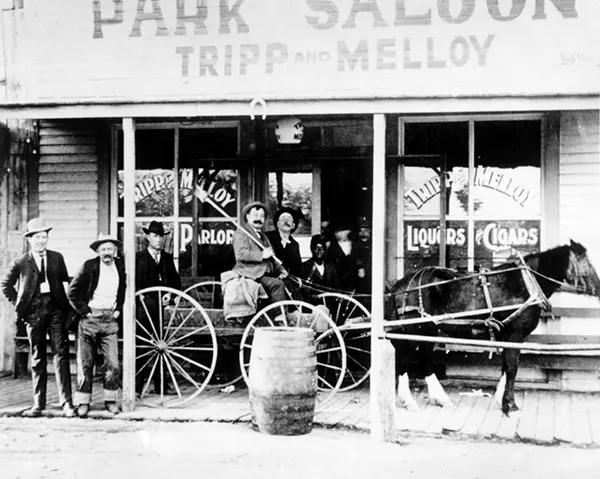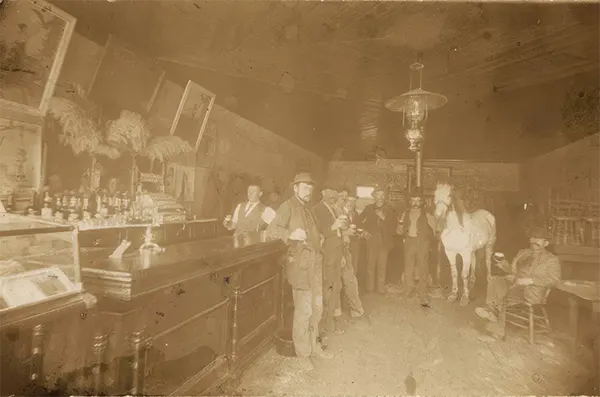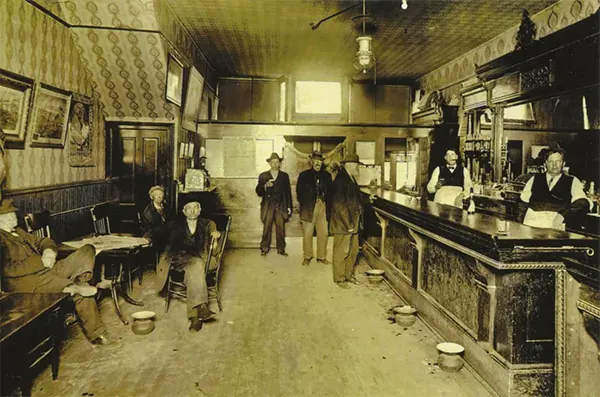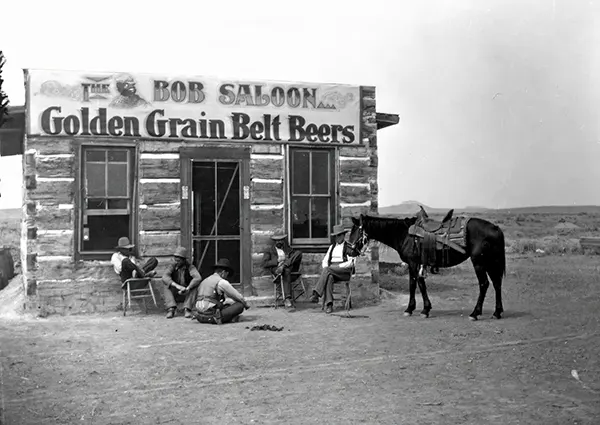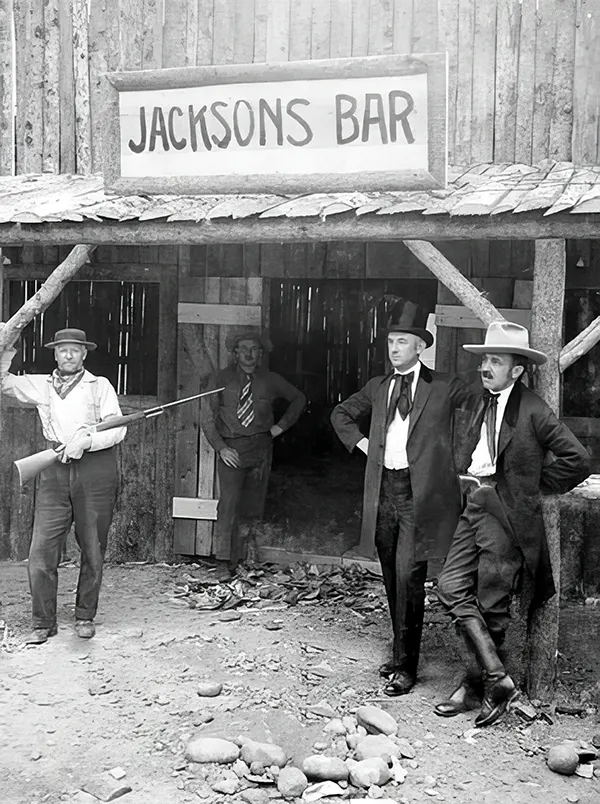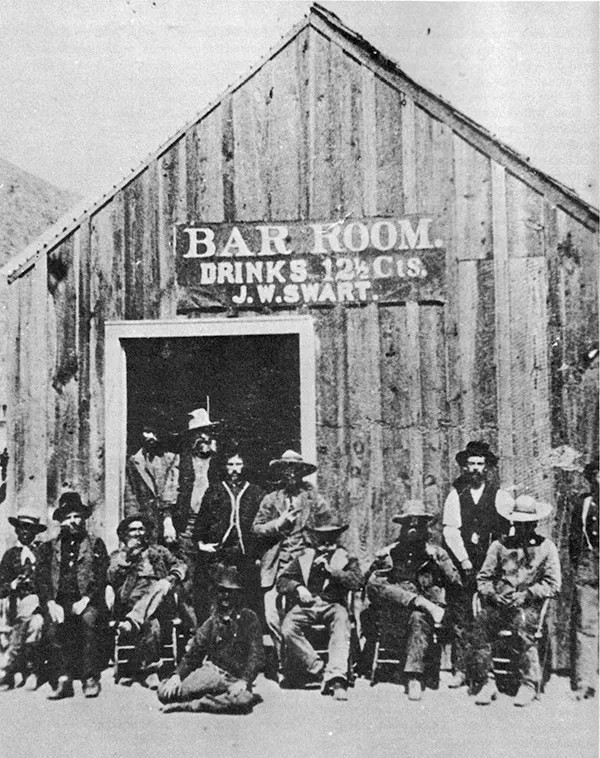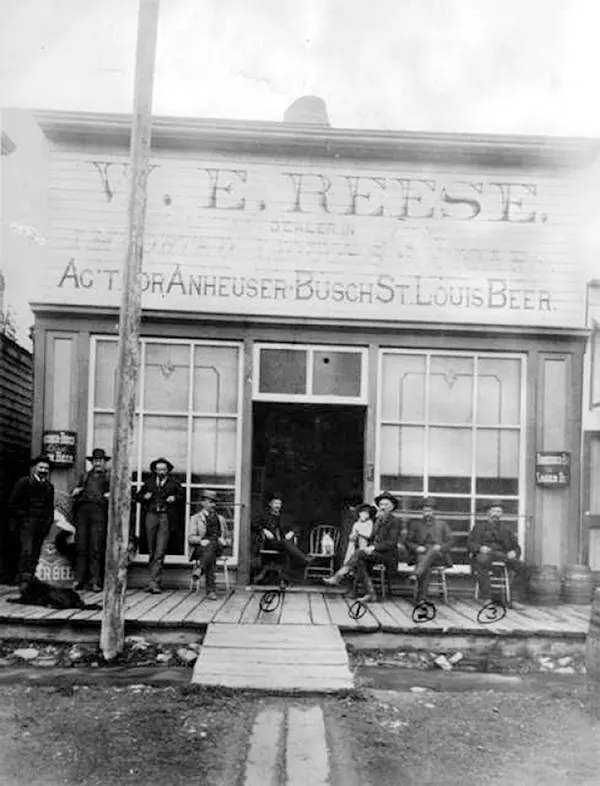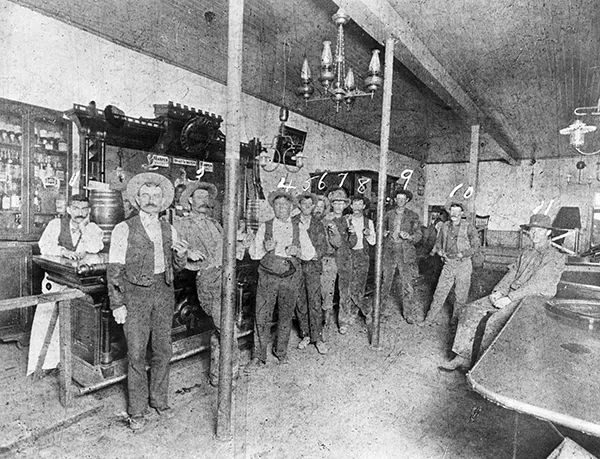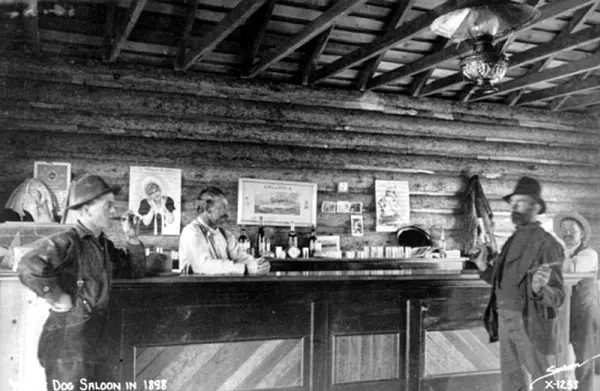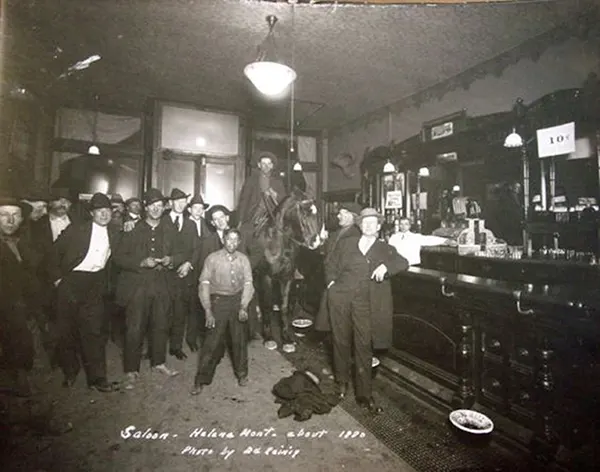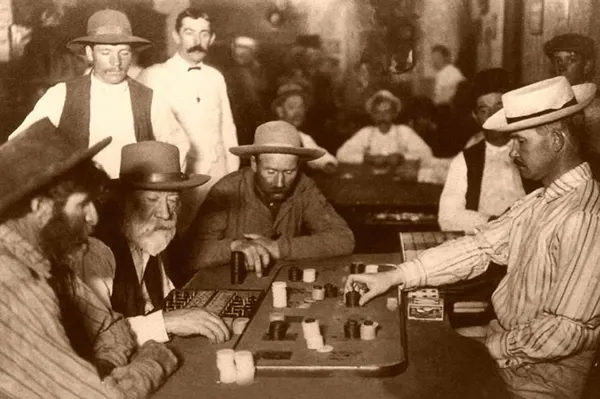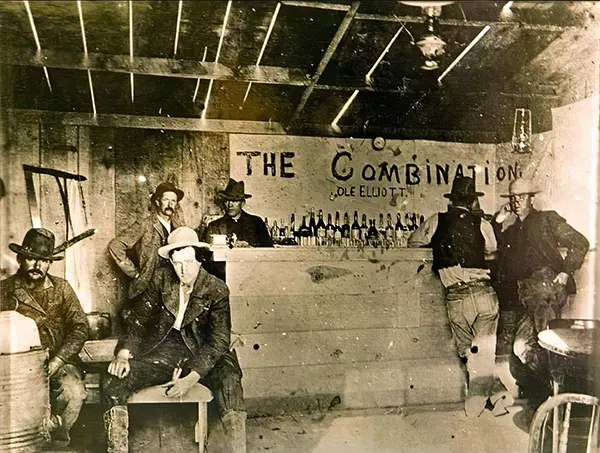In the 19th century, the American frontier was a wild and rugged place. As people moved west to seek fortune and adventure, towns began to spring up. One of the first buildings to appear in these frontier towns was often the saloon. These establishments became the heart of the town’s social life, attracting a diverse crowd, including cowboys, miners, fur trappers, gamblers, lawmen, and outlaws.
The First Saloons
The very first saloon is believed to have opened in Brown’s Hole, Wyoming, in 1822. This saloon mainly served fur trappers who needed a place to relax, socialize, and drink after long, hard days in the wilderness. As the westward expansion continued, more saloons popped up in new towns across the frontier.
Saloons were also known by many other names, such as “watering troughs,” “bughouses,” “shebangs,” “cantinas,” “grogshops,” and “gin mills.” Despite the different names, they all served the same purpose: a place for people to gather, drink, and enjoy themselves. The atmosphere in these saloons could vary greatly. In the early days, especially in remote areas, saloons were quite basic. They had minimal furniture and were not fancy at all. A single wood-burning stove might be the only source of heat in the winter.
Read more
The Look of a Saloon
The look of a saloon depended on its location and the time period. Early saloons were often built using whatever materials were available. Some were made from sod cut from the ground, while others might be constructed from the hull of an old ship or dug into the side of a hill. As towns grew and prospered, saloons became fancier. Bartenders took pride in their establishments, and the quality of the drinks and the appearance of the bar improved.
One of the most distinctive features of many Old West saloons was the “batwing” doors at the entrance. These doors were mounted on special hinges that allowed them to swing both ways. They usually extended from chest height to knee height, providing a unique and memorable look. The batwing doors became a symbol of the Wild West saloon, appearing in countless movies and stories about the era.
A Diverse Crowd
Saloons attracted a wide variety of people. Cowboys would come in after a long day of herding cattle. Miners would stop by to spend their hard-earned money. Fur trappers, soldiers, lumberjacks, businessmen, lawmen, outlaws, gamblers, and many others all found their way to these establishments. The saloon was a place where people from all walks of life could come together, share stories, and enjoy a drink.
Vice and Violence
While saloons were places of social gathering, they also gained a reputation for vice and violence. Many saloons housed brothels and opium dens. Gambling was a common activity, and cheating often led to heated arguments. Street brawls were not uncommon, with conflicts frequently spilling out from the saloons into the streets. Law enforcement was often limited, and saloon disputes sometimes ended in deadly gunfights.
Women in Saloons
Interestingly, women who were not parlor girls or dancers were typically not allowed entry into these establishments. The presence of women in saloons was usually limited to those who worked there, either as entertainers or in the brothel. Respectable women were generally expected to stay away from these places, as the environment was considered unsuitable for them.
The Role of the Bartender
The bartender played a crucial role in the saloon. He was not just a server of drinks but also a keeper of the peace. Bartenders had to be tough and able to handle rowdy customers. They were often among the most respected and well-known figures in town. A good bartender could pour a drink with flair and keep the customers in line, ensuring that the saloon remained a place where people wanted to spend their time and money.
Drinks and Entertainment
Saloons offered a variety of drinks, with whiskey being the most popular. However, they also served beer, wine, and sometimes more exotic concoctions. Entertainment in saloons varied widely. There might be live music, dancing, card games, and other forms of gambling. Some saloons had stages for performances, where musicians, comedians, and other entertainers would perform for the crowd.
By the 1880s, saloons had become more established and varied in their offerings. In places like Leavenworth, Kansas, there were around 150 saloons and four places selling liquor wholesale. As towns grew bigger and richer, the saloons became more sophisticated. They featured better furnishings, more elaborate decorations, and a wider range of services.


